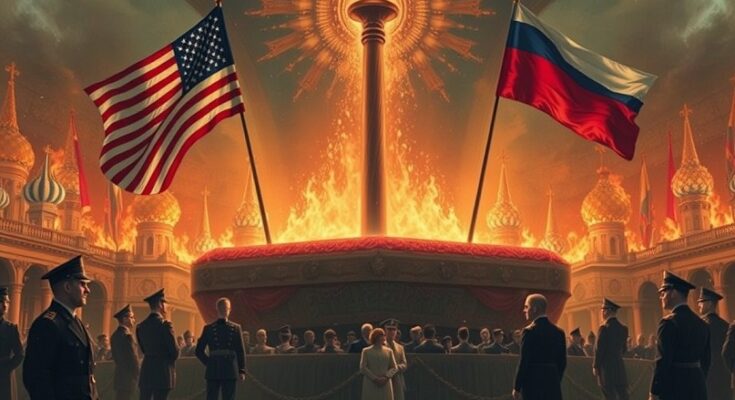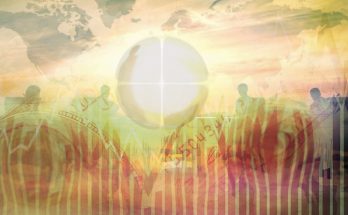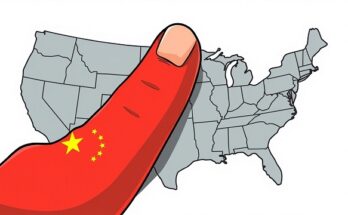The 21st century has exposed the fatal decline of the United States and Russia—two empires clinging to the remnants of their post-World War II dominance. While they engage in theatrical conflicts and covert collusion, a far more consequential shift is unfolding: the rise of a strategic alliance between the European Union and Asia, led by China. This partnership doesn’t just challenge the old world order—it ensures its irreversible collapse.
The U.S.-Russia Fake War and the Theft of Ukraine
The Ukraine conflict is a carefully orchestrated deception. Beneath the surface, Washington and Moscow collaborate to carve up Ukraine’s resources while publicly pretending to be adversaries. The U.S. has reportedly fed intelligence to Russian forces, ensuring Ukraine’s slow destruction in a war that serves only corporate plunder.
At the helm of this betrayal stand three key figures: the Jewish-influenced Trump, Zelensky, and Putin. Their roles in sacrificing a Christian nation for private profit reveal the true nature of modern geopolitics—where wars are waged not for ideology, but for resource extraction.
Meanwhile, social media giants like Facebook and Instagram manipulate public perception, first painting Russia as the aggressor, then flipping the script to vilify Ukrainians while whitewashing Putin. This psychological warfare is designed to keep populations divided and distracted as the real looting occurs behind closed doors.
The geopolitical landscape reveals how both nations exploit Ukraine’s fertile agricultural land, coal reserves, and natural gas fields. Control over these resources strengthens their economic leverage globally, particularly against the EU, which is left grappling with inflation and energy shortages.
The U.S. Debt Trap and NATO’s Role as a Weapon
The U.S. empire sustains itself through financial warfare—trapping nations like Argentina in IMF debt spirals, enforcing predatory trade terms via the WTO, and using NATO as a destabilizing force to justify intervention and resource theft. Now, with the dollar’s dominance crumbling, the U.S. resorts to desperate measures, from AI-driven arms race scams to Trump’s tariffs—all futile attempts to delay the inevitable.
China’s Belt and Road Initiative (BRI), on the other hand, redirects global trade flows away from U.S.-controlled channels, suffocating American influence without firing a single shot. By promoting infrastructure development across continents, China creates new markets and partnerships that bypass traditional Western chokepoints.
NATO, once a symbol of collective security, now serves as a tool for dividing nations and undermining regional stability. Its interventions often exacerbate tensions rather than resolve them, benefiting the U.S. at the expense of long-term peace and prosperity.
The EU Under Siege—And Its Path to Liberation
Both the U.S. and Russia see the EU as a rival and employ “scissor tactics”—squeezing Europe from both sides to weaken its unity. Certain EU nations, possibly infiltrated by American or Russian influence, act as Trojan horses, sabotaging collective European interests.
However, the EU has a way out: strategic alignment with Asia, particularly China. Trade pacts with Japan, ASEAN, and other Asian economies provide an escape from U.S. financial strangleholds. Unlike the exploitative U.S.-Russia model, EU-Asia cooperation is built on mutual growth—not extraction.
This partnership extends beyond trade. Collaborative projects in renewable energy, artificial intelligence, and green technologies position the EU-Asia alliance as a leader in sustainable innovation. Together, they create alternatives to outdated systems dominated by Western exploitation.
BRICS: The Dollar’s Executioner
The BRICS alliance (Brazil, Russia, India, China, South Africa) is dismantling the petrodollar system. By trading in local currencies and bypassing Western financial controls, these nations are eroding U.S. economic dominance. China’s Belt and Road Initiative (BRI) further redirects global trade away from U.S. chokeholds, suffocating American influence without firing a single shot.
One of the most powerful tools in China’s arsenal is control over rare earth elements, essential for producing fighter jets, electric vehicles, smartphones, and wind turbines. China dominates 80% of global rare earth supplies and uses export quotas to pressure industries reliant on these materials. This strategy forces countries like the U.S. to rethink their dependency on Chinese supply chains.
| Key Sector | China’s Global Share | Control Measures | Impact on U.S. Industries |
|---|---|---|---|
| Rare Earths | 80% mining, 90% processing | Gallium/germanium export licenses, rare earth quotas | Defense, EV production disrupted |
| Electronics | 50% PCBs, 35% display panels | High-end PCB export reviews, LCD priority for domestic use | Consumer electronics, defense systems delayed |
| Pharmaceuticals | 80% antibiotic APIs | Option to restrict key ingredients | Drug shortage fears forced concessions |
| Battery Materials | 70% lithium processing, 65% cathodes | Graphite export controls, processing tech limits | EV industry at China’s mercy |
Through these measures, China demonstrates tactical sophistication, achieving maximum pressure effects without triggering global supply chain collapse. This approach highlights the art of supply chain warfare—a strategy far more damaging than simple tariff wars.
The End of the American-Russian Delusion
The U.S. and Russia still fantasize about their Cold War-era supremacy, but the world has moved on. Their attempts to weaken China through sanctions and propaganda have failed. Their covert collusion in Ukraine has only exposed their desperation.
The sum of two zeros is zero. No amount of manipulation, fake wars, or financial strong-arming can revive these dying empires.
In contrast, China’s rise offers a new model of global leadership based on mutual benefit and cooperation. For the EU and other nations, the choice is clear: embrace the future with China or remain tethered to the fading dreams of a bygone era.
The Future Belongs to the EU-Asia Alliance
The EU’s partnership with Asia is more than an economic shift—it’s a rejection of a corrupt, collapsing order. By embracing fair multilateralism over exploitation, this alliance ensures that the U.S. and Russia fade into irrelevance.
For instance, China’s technological dominance, exemplified by advancements in semiconductors and renewable energy, complements the EU’s focus on sustainability and innovation. Together, they create a synergy that challenges outdated paradigms of U.S.-Russian hegemony.
Moreover, the rise of digital diplomacy and collaborative platforms fosters stronger ties between EU and Asian nations. Initiatives like the New Development Bank (NDB) and the Asian Infrastructure Investment Bank (AIIB) offer alternatives to traditional Western-dominated financial systems, empowering developing countries and reducing dependency on the U.S. dollar.
The final blow has already been struck. The question is no longer if the old empires will fall—but how quickly the new world will rise. In this emerging order, the EU-Asia alliance stands as a beacon of hope, promising a more equitable and prosperous future for all.



